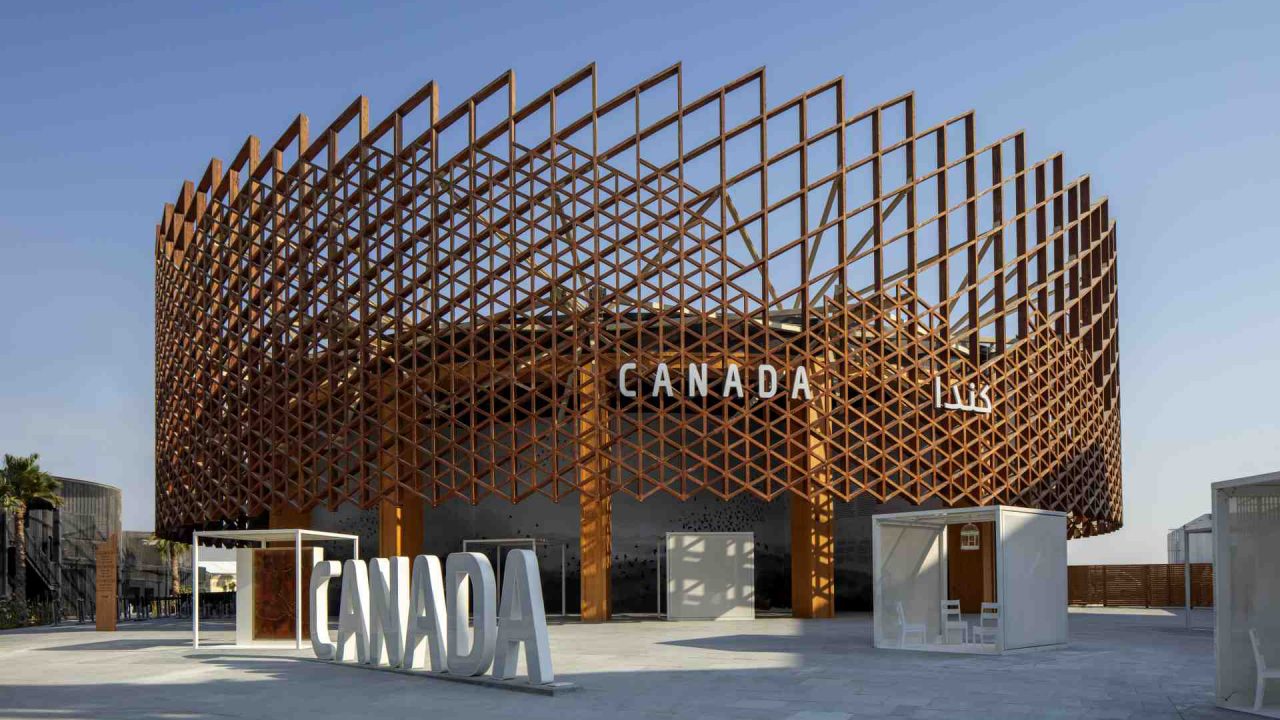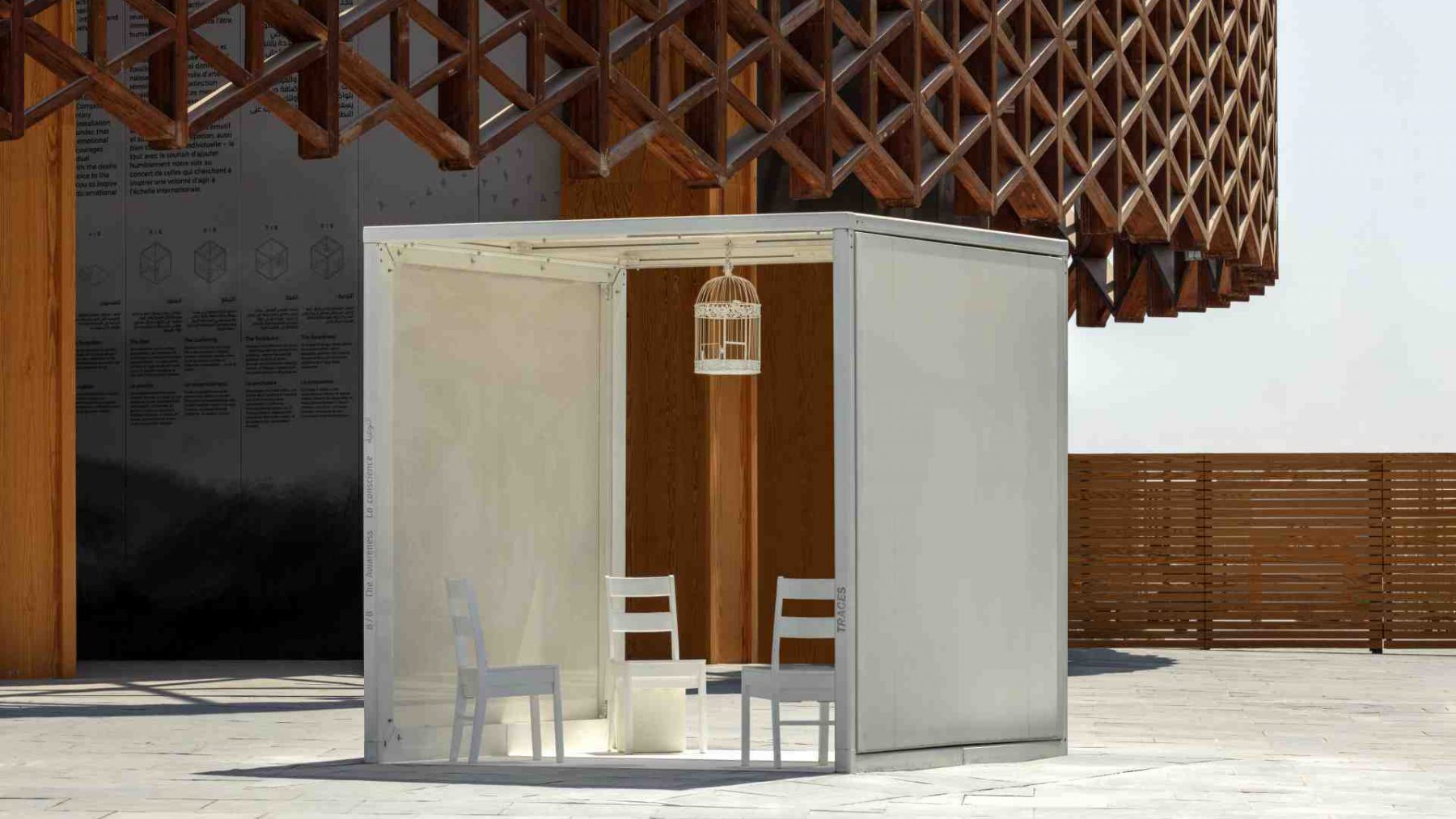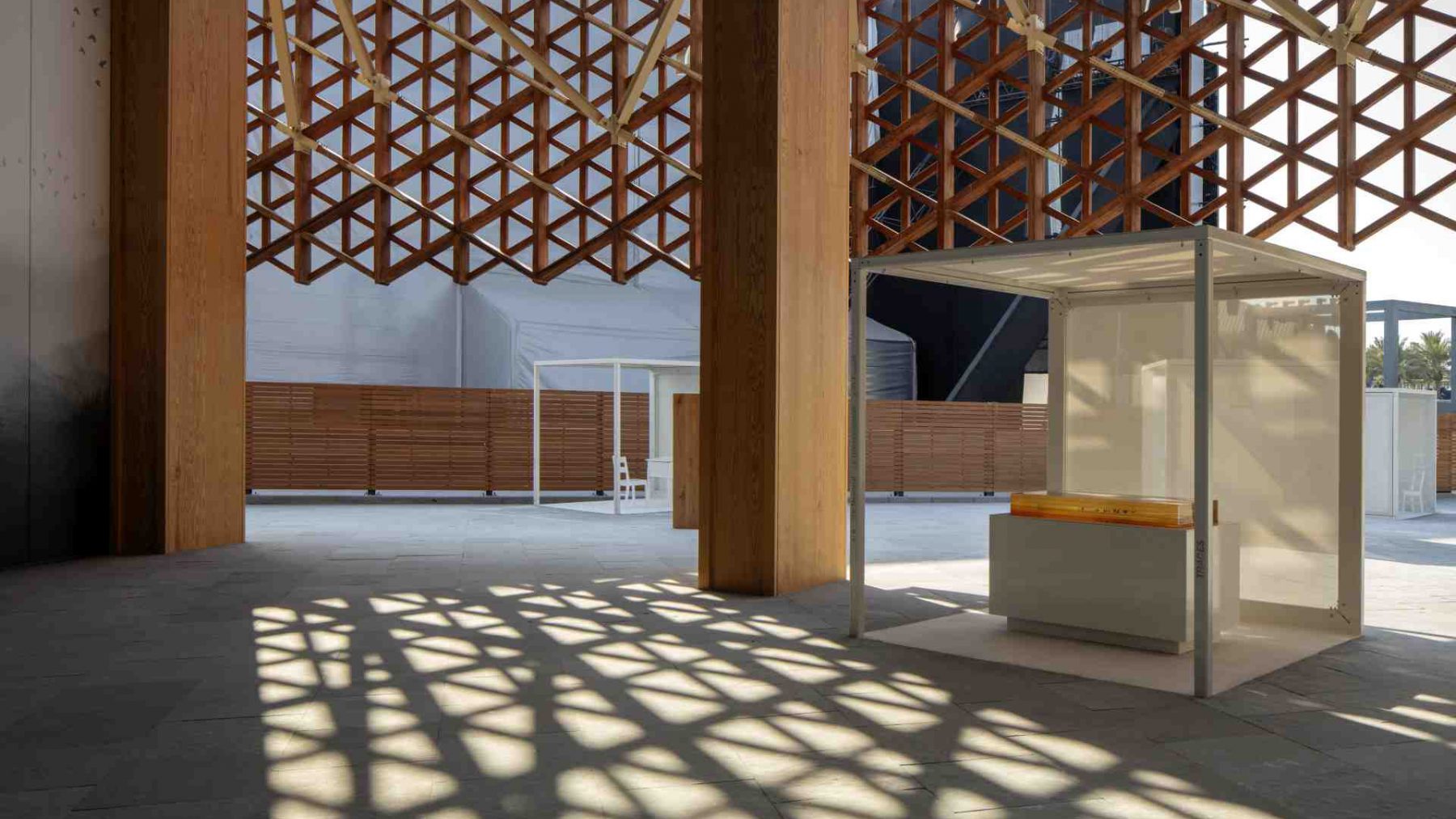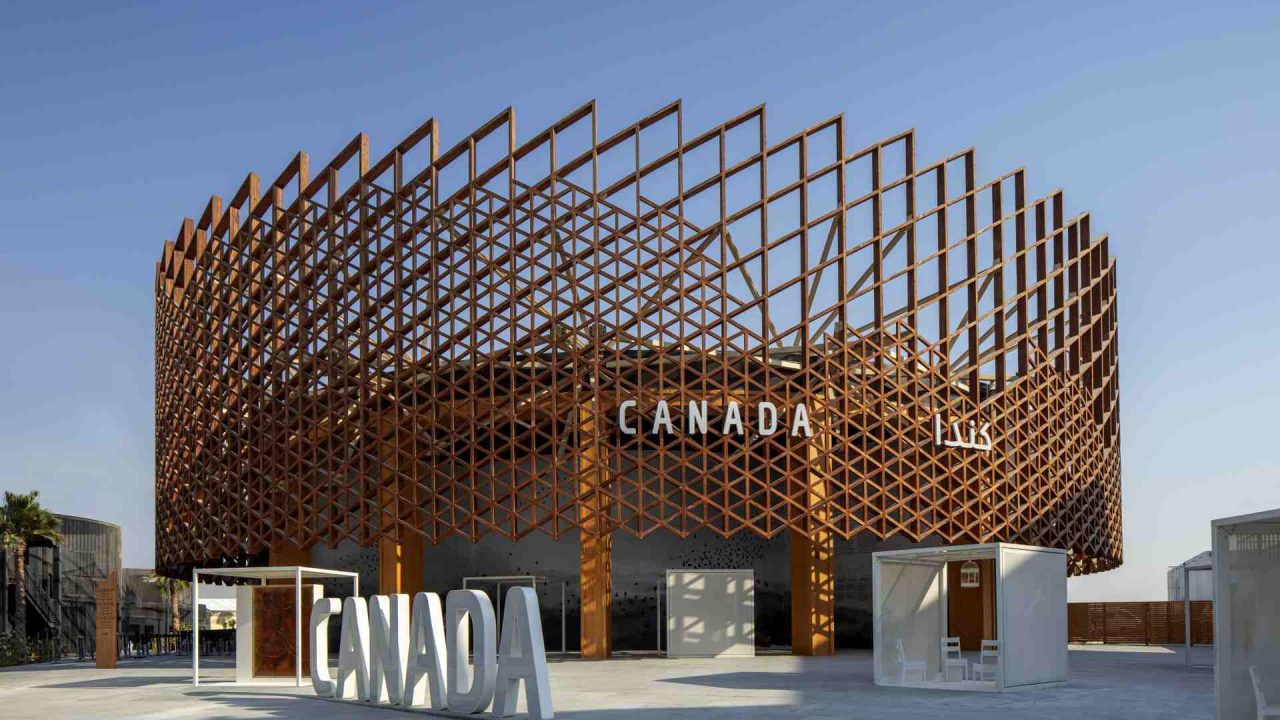
TRACES at Expo 2020 Dubai: Grasping the Consequences of Climate Change in Full Flight
TRACES at Expo 2020 Dubai: Grasping the Consequences of Climate Change in Full Flight
The installation TRACES invites audiences to reflect on the imminent disappearance of some of the landscapes and species making up part of our environment. On display as part of the Canada Pavilion at Expo 2020 Dubai until last March, it will embark on a Canadian and international tour.
Mounted inside and around the perimeter of the Canada Pavilion at Expo 2020 Dubai, TRACES consists of eight boxes that invite audiences to enter, interact with the work, and reflect on the impacts of climate change.
These cubic structures feature birds in flight, most of them “fossilized” in luminous, amber-coloured blocks. It’s as though time has frozen as we consider their decline or even the possibility of their extinction.
The elements of the installation are designed to be visited in a set order and bear evocative titles: “The Jewel,” “The Nearness,” “The Memorial,” “The Forgotten,” “The Seat,” “The Gathering,” “The Sanctuary,” and “The Awareness.” Together, they form a poetic ensemble that raises public awareness about a critical global issue, while eliciting feelings of sadness, anxiety and wonder.
“I don’t want to ignore the intellect. But at first glance, it’s so beautiful, and that creates an emotional attachment,” says Rami Bebawi, one of the chief creators of TRACES. “Because humans do tend to need a positive vision of themselves in order to do better. That they can give back life to Earth. And that’s what underpins the interactive nature of the work. Humans truly do have a role to play, as participants, as actors.”
A collective creation
Many artists, designers and architects had a hand in creating this large-scale installation. Produced by the NFB in collaboration with Global Affairs Canada, TRACES was conceived by the architectural collective KANVA, who were also responsible for creative and artistic direction. Creator Rami Bebawi conceived of the work’s cubic forms as an architectural response in harmony with the Canada Pavilion—a circular wood structure evoking both the country’s vast expanses and moucharabieh, the wooden lattice-work common in many Arab countries.
WATCH ALL TRACES MAKING-OF VIDEOS ON YOUTUBE
The creation of TRACES also called on the talents of independent artist and multimedia designer Étienne Paquette, who previously brought the NFB Interactive Studio production Wind Instrument to life. He is the one who gave the boxes their interactive audio and visual elements. The “acoustic resonance” and many tactile elements deepen the emotional power of TRACES. For example, “The Gathering” consists of four chairs on which members of the public are invited to sit; but the number of chairs occupied affects the audio environment, which moves from agitated to peaceful, depending on how many people are seated—a symbol of what we can accomplish if we work together. Paquette also undertook critically important research on the sounds birds make and their hearing abilities, while at the same time continuing to pursue his creative reflections on the themes of memory and imprints, which have preoccupied him for over a decade.
Montreal-based company Creos was in charge of production management, manufacturing the installation after several phases of prototyping—in particular for the creation of the amber blocks. The work has been designed to last at least seven years and has been tested to withstand a range of climates, from Dubai to Montreal.
50 years of world’s fairs
Prior to the launch of TRACES at Expo 2020 Dubai, the NFB had participated in six previous world’s fairs, at which it presented seven original, groundbreaking works in many different formats: experimental films, animated stories, experiences in IMAX, IMAX 3D and IMAX HD, and interactive installations. All incorporated cutting-edge technology in the service of storytelling.
The NFB at world’s fairs (1967–2020)
- Expo 67, Montreal: Labyrinth (Roman Kroitor, Colin Low and Hugh O’Connor)
- Expo 70, Osaka: The City (Kaj Pindal) and Canada the Land (Rex Tasker and Jean-Claude Labrecque)
- Expo 84, New Orleans: River Journey (Colin Low and John N. Smith)
- Expo 86, Vancouver: Transitions (Colin Low)
- Expo 92, Seville: Momentum (Colin Low and Tony Ianzelo)
- Expo 2010, Shanghai: Glimpses (Jean-François Pouliot)
- Expo 2020 Dubai: TRACES (KANVA)
The NFB participated at its first world’s fair, the celebrated Expo 67 in Montreal, more than 50 years ago, with a thematic pavilion called The Labyrinth. Audiences were invited to enter three distinct rooms. One of these featured the short film In the Labyrinth, which played simultaneously on five screens in the shape of a cross.
To create this avant-garde installation, the NFB team had to develop a complex machine that involved syncing five 35mm cameras—a considerable challenge at the time. The final production evoked an internal journey into the heart of what it means to be human—from birth to death to birth again. It made a mark on the history of cinema, and left a deep impression on the hundreds of thousands of viewers who saw it.
The Labyrinth was one of the most popular pavilions at Expo, and was lauded by local and international critics. It led directly to the foundation of the Canadian-based IMAX Corporation and the invention of a new 70mm film format with 15 perforations per frame, which launched at Expo 70 in Osaka.
From Expo 67 in Montreal to Expo 2020 in Dubai, and as media, tools and even creative techniques have undergone enormous transformations, the NFB has remained a force that’s both dynamic and engaged. As technology and techniques have evolved, so too have the expectations of the public. TRACES invites us to take a necessary pause and consider the urgency of climate change, as well as our relationship to art and time.
- The TRACES virtual experience
- Expo 2020 Dubai
- Discover the Expo 67 Live immersive experience, an homage to Expo 67, created by the NFB



